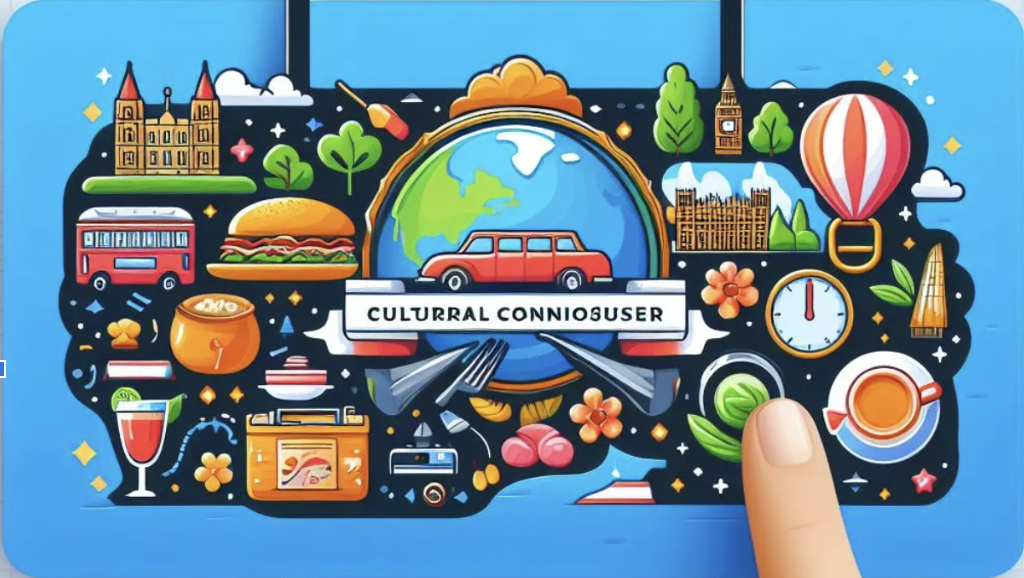Design Document: Culture Shock Mobile Application
1. Introduction
1.1 Purpose
The purpose of the Culture Shock mobile application is to provide users with a comprehensive and interactive platform to learn about the culture, food, general phrases, and popular tourist sites of a target country. The application aims to offer an engaging experience that mirrors a traditional travel itinerary, presented through an intuitive graphical user interface (GUI).
1.2 Target Audience
The primary target audience includes travelers, culture enthusiasts, and individuals who wish to explore and understand different cultures. The application is designed to cater to both novice and seasoned travelers looking for an immersive cultural learning experience.
2. Features
2.1 Cultural Insights
Users can access detailed information about the culture of the selected country, including customs, traditions, festivals, and historical background. Rich multimedia content such as images and videos will be integrated to enhance the learning experience.
2.2 Culinary Exploration
A dedicated section will showcase the diverse culinary offerings of the target country. Users can explore traditional dishes, recipes, and learn about local dining etiquette. Integration with external platforms for recipes and restaurant recommendations can be considered.
2.3 Language Basics
Users will have access to a collection of general phrases essential for communication in the target country. Audio pronunciation guides, language quizzes, and interactive lessons will be provided to facilitate language learning.
2.4 Tourist Sites
A curated list of popular tourist sites, landmarks, and attractions will be displayed with detailed information, including operating hours, admission fees, and user reviews. Augmented reality (AR) features can be incorporated for an interactive exploration experience.
2.5 Itinerary Planner
The application will feature an itinerary planner where users can create and customize their travel plans. The planner will suggest activities based on the user's preferences and time constraints, ensuring a well-rounded cultural experience.
2.6 User Profiles and Progress Tracking
Users can create profiles to track their learning progress, saved itineraries, and preferences. Gamification elements, such as badges and rewards, can be implemented to motivate users to explore more content.
3. Architecture
3.1 Frontend
The frontend will be developed as a mobile application with an intuitive and user-friendly GUI. Native development for iOS and Android platforms will be considered for optimal performance and user experience.
3.2 Backend
The backend will manage user accounts, content storage, and third-party integrations. A content management system (CMS) will be implemented to facilitate easy updates to cultural content, recipes, and tourist site information.
3.3 Database
A robust and scalable database system will store user profiles, itineraries, and content metadata. Integration with cloud-based solutions can enhance accessibility and ensure data security.
4. Technologies
4.1 Development Frameworks
Frontend: React Native for cross-platform mobile development
Backend: Node.js with Express.js for a scalable and efficient server
Database: MongoDB for flexibility in managing varied data types
4.2 External APIs
Integration with third-party APIs for real-time language translation, recipe recommendations, and AR features.
4.3 Cloud Services
Utilize cloud services (e.g., AWS, Firebase) for hosting, data storage, and scalability.
5. User Interface (UI) Design
5.1 Design Principles
Simple and intuitive navigation
Consistent design elements for a cohesive user experience
Inclusion of culturally relevant visual elements
5.2 Mockups and Prototypes
Create interactive prototypes and conduct user testing to refine the UI design.
6. Security and Privacy
Implement robust security measures to protect user data, including secure authentication, encryption, and compliance with data protection regulations.
7. Testing
Conduct thorough testing, including unit testing, integration testing, and user acceptance testing, to ensure the application's functionality and performance.
8. Deployment
Release the application on official app stores (App Store and Google Play) after successful testing and refinement.
9. Maintenance and Updates
Establish a plan for regular updates, addressing user feedback, and ensuring compatibility with new operating system versions.
10. Conclusion
The Culture Shock mobile application aims to provide an enriching cultural experience for users, combining education and entertainment in a user-friendly platform. By implementing the outlined features and technologies, the application can become a go-to tool for users seeking to immerse themselves in the culture of their chosen destination.
